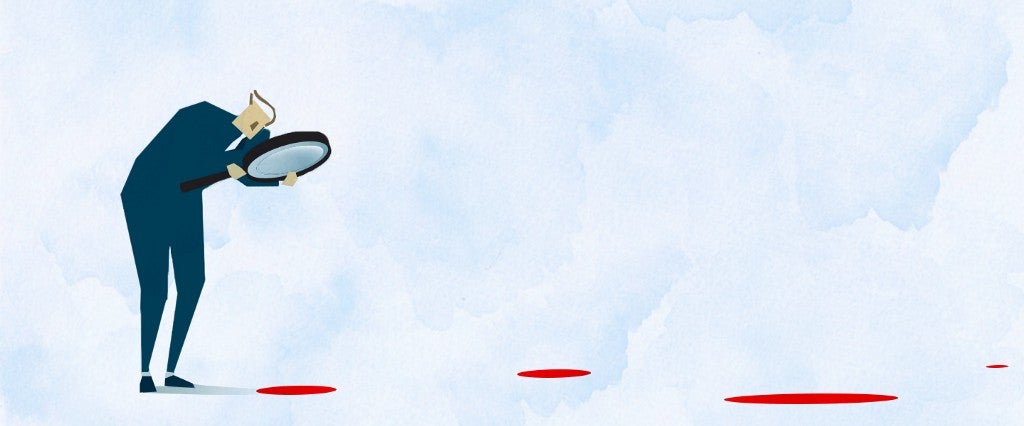Ask William Sacks how he ended up founding an app to help women track their periods, and he’ll explain that it all began on a date. “We had been dating for a few months, and then by that point we brought up the birth control conversation,” he remembers. After his girlfriend (now wife) Kati Bicknell told him she had no plans to go on the pill, she made a suggestion that struck him as unusual: “We can use this book as birth control,” she said, passing him a copy of Taking Charge of Your Fertility, a bestselling guide to naturally avoiding pregnancy first published in 1995.
Sacks was skeptical that a book could be that powerful. If birth control and family planning could be as easy as checking temperatures, wouldn’t everyone know? The book explains how women can monitor their body temperature (which goes up after ovulation) and cervical fluid (which gets wetter as ovulation approaches and dries up afterward) to forgo hormonal treatment and avoid (or achieve) pregnancy. “I thought I knew all there was to know [about fertility and reproduction] but really I knew nothing,” Sacks says. “I felt like that was the first time I really understood what it’s like to be a woman in a small way. And really, my eyes were open.”
Using the book’s fertility awareness method, or FAM, the couple tracked Bicknell’s fertility signs on paper and with the aid of other period apps. While this worked well enough for them, they felt like the apps weren’t advanced enough to trust fully, which meant manual tracking was still the most effective technique. “Someone needed to create really robust technology to help couples practice FAM,” says Sacks, who became increasingly fascinated by the data that powered the method. “It appeals to me as an engineer. I thought it was such a beautiful thing.”
Soon, the couple was so pleased with their experience that they wanted a way to easily let others practice FAM digitally. In 2011, Sacks and Bicknell released their period-tracking app Kindara; since then, they’ve received $5.3 million in seed funding to launch Wink, an oral thermometer that syncs automatically with the app. Users simply enter their daily primary fertility signs into Kindara, which generates a graph to let them know when their fertility is peaking.
Of course, Kindara is far from the only app promising to make whatever’s going on in a woman’s cycle less mysterious, or at least more predictable. Look at any app store and you’ll find more than a hundred, mostly free apps (often with the option to go ad-free for an extra dollar). The icons, like the ones used for the current number-one app, Period Tracker, are usually pink or red, while inside the apps, flowers shedding petals — not unlike the Enchanted Rose from Beauty and the Beast — are a popular motif.
While most of these apps work in a technical sense, they haven’t evolved much since their inception, which is, in part, what makes Kindara stand out. The app itself is direct and easy to use, and avoids any shedding-flower imagery.
Kindara also stands out for its founder’s gender. Sacks says that being a man doing this job has been an ongoing lesson in gender roles and challenging what men are meant to find interesting. (It has also meant stepping down as CEO in March to make way for Denise Franklin, a move that Sacks says was meant to give him more time to focus on the product.) For Sacks, his interest in women’s health and his role running a women’s health company aren’t weird — mostly because he sees the world moving in a direction in which the lines of gender are blurred. “In so many areas in life, when you deconstruct the default options and show there’s a lot of space around and between the defaults, it allows people to be more self-expressed and be who they are.”
But Sacks had to reconcile himself to the fact that he would never truly be an authority on fertility. “I don’t have the lived experience of being a woman, so it took me a while to figure out what I could have an informed opinion on and what I couldn’t have an informed opinion on,” explains Sacks. “I can’t talk authoritatively on what it’s like when women have to go through their cycles and progesterone increases and estrogen decreases.” While he can observe what his wife goes through, he also realizes that’s just one experience. “It took two years, probably, to understand there are certain things I can talk authoritatively about and things I couldn’t.” He knows he has mastered many of the quantifiable aspects of pregnancy and fertility — like the science behind tracking fertility signs — but thinking about the subjective experience is better left to his female colleagues.
That is perhaps why, though Sacks is a feminist, Kindara isn’t overtly political when it comes to women’s issues. Though the company waded into controversial waters with a blog post commenting on the Hobby Lobby case, they have mostly held back to avoid alienating their users. “A way to have a big impact is to have our product out there,” Sacks learned. “The experience of understanding your body and fertility is a revolutionary act.”
Kindara’s huge success in the saturated market of period-tracking and fertility apps is rare, but also makes total sense. By treating women like intelligent adults, Kindara has compiled one of the biggest data sets on fertility and a community built on respect, of which Sacks and Bicknell count themselves members. For the last seven years, the couple has used the fertility awareness method to remain happily and naturally child-free.
Sarah Hagi is a writer whose work has appeared in Cosmopolitan, Rookie and Paper.
